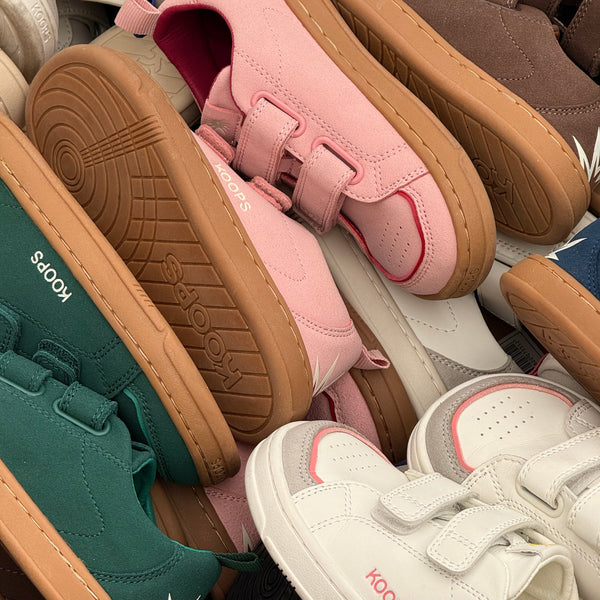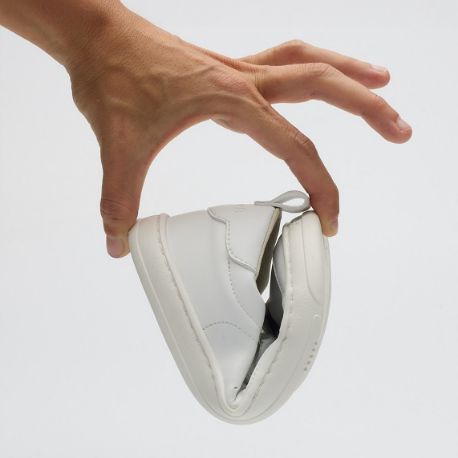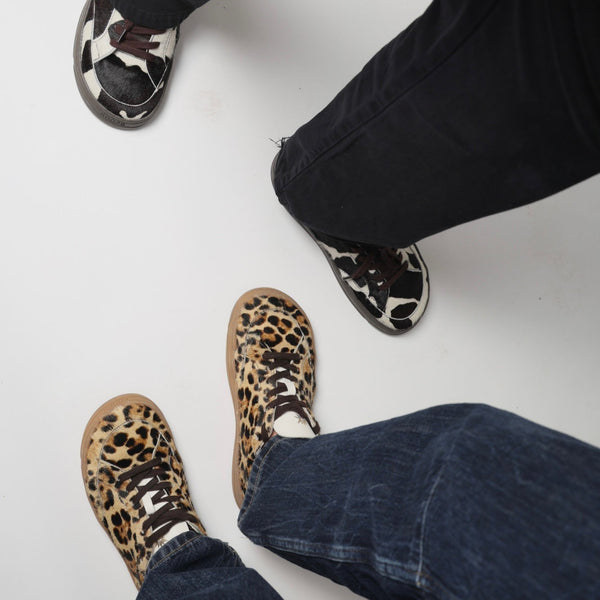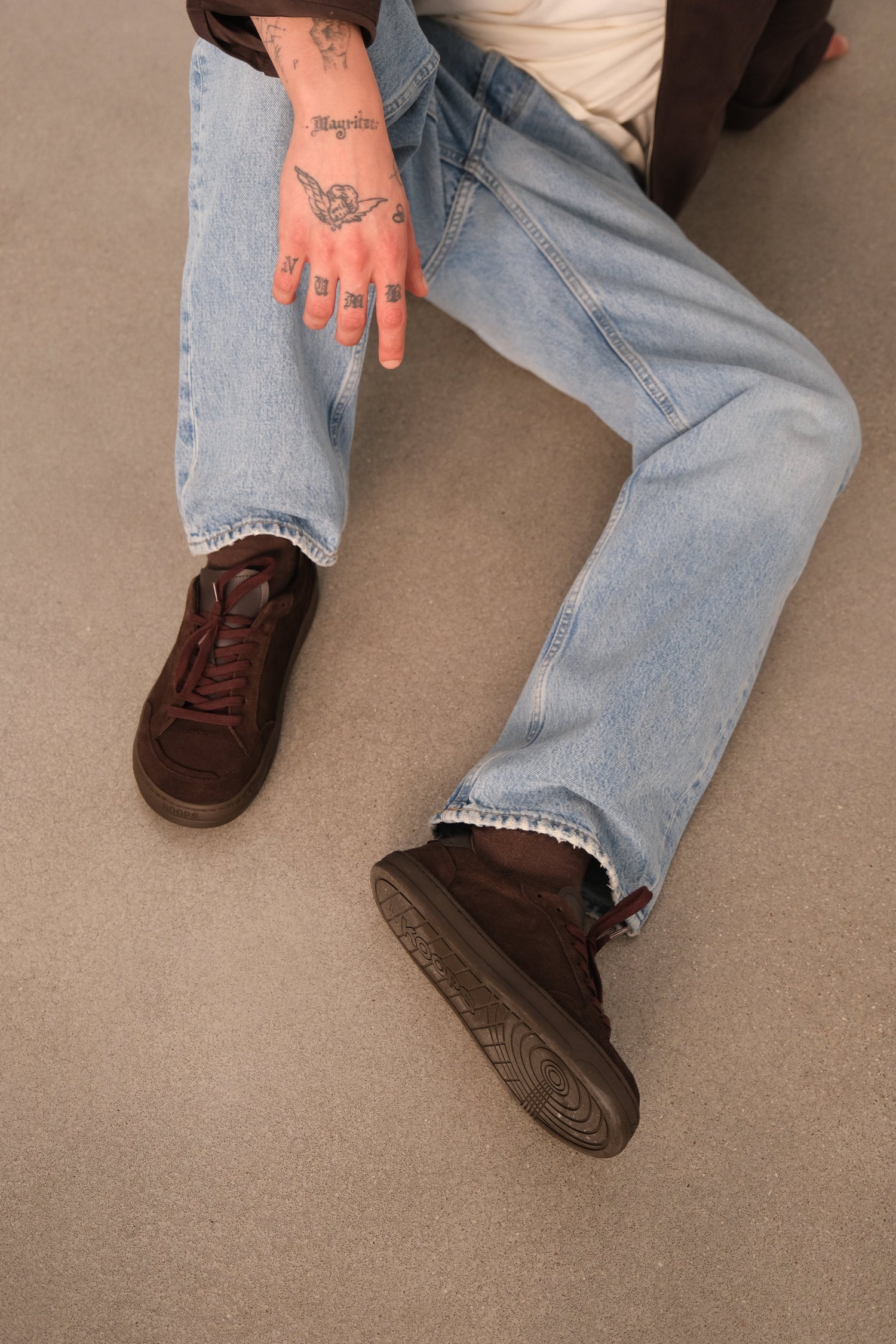How to Transition to Barefoot
Ready to move into barefoot or minimalist footwear? Done well, the transition can feel liberating—improving foot strength, balance and natural movement. Done too fast, it can lead to sore calves, tender Achilles tendons, or bruised feet. This guide walks you through exactly how to transition to barefoot safely, what to expect week by week, and the key drills that make the process smoother.
What “Barefoot” Means (and Why It Matters)
When people say “barefoot,” they usually mean either truly barefoot or wearing minimalist shoes: flat (zero-drop), flexible, lightweight, and with a wide toe box that lets toes splay. The goal is to restore natural mechanics—more sensory feedback from the ground, a shorter stride, softer landings, and stronger intrinsic foot muscles. The catch: most of us have spent years in cushioned, narrow, heeled shoes, so our tissues need time to adapt.

Before You Start: Readiness Checklist
- You can walk for 30–45 minutes without foot or calf pain in your current shoes.
- You can perform 20 controlled single-leg calf raises per side.
- You can balance on one leg for 30 seconds with eyes open (10–15 seconds eyes closed is a bonus).
- Your big toe moves freely (can press the big toe down without the arch collapsing).
- You’re willing to increase load gradually and back off when tissues feel overloaded.
Strength & Mobility Warm-Up (2–3 Weeks of Prep You Can Keep Using)
Spend 10–12 minutes, 3–5 days per week, on these drills. Keep them in your routine throughout the transition.
Foot Activation
- Toe splay x 10: Spread your toes apart, hold 3 seconds, relax.
- Short-foot (arch lift) x 10: Gently draw the ball of the big toe toward the heel without curling toes; hold 3 seconds.
- Towel scrunches x 2 sets: Pull a towel under your foot with the toes; slow and controlled.
Lower-Leg Strength
- Calf raises x 15–20: Straight-knee, then bent-knee to target both gastrocnemius and soleus. Progress to single-leg.
- Eccentric heel lowers x 8–10: Rise on both feet, lower on one over 3–4 seconds to build tendon capacity.
Mobility & Tissue Care
- Calf/Achilles stretch: 30–45 seconds straight-knee and bent-knee per side.
- Plantar foot rolling: 60–90 seconds per foot with a small ball to wake up the fascia.
- Ankle circles: 10 each direction to restore range of motion.
Choosing Footwear for the Transition
If you won’t go truly barefoot, pick minimalist shoes with four features: zero-drop (no heel-toe ramp), flexible sole you can twist and fold, lightweight construction, and a roomy toe box. Start with a model that offers ground feel without being paper-thin; as you adapt, you can go thinner if you like. Whatever you choose, comfort and natural foot shape come first.

A Progressive Plan: 8–12 Weeks (or Longer If Needed)
This timeline is a template. If you feel sharp pain, persistent soreness, or tendon irritation, reduce volume and add recovery days. Tissue adapts with time and load—not with force.
Phase 1 — Awareness & Adaptation (Weeks 1–2)
- Daily: 10–15 minutes barefoot at home or in minimalist shoes on safe, smooth surfaces.
- Walks: Finish your normal walk with 5–10 minutes in minimalist shoes.
- Focus: Posture tall, shorter steps, foot lands under your center of mass. Expect mild calf/foot fatigue.
Phase 2 — Build Time on Feet (Weeks 3–4)
- Daily: 20–30 minutes total spread through the day in minimalist shoes.
- Walks: 15–25 minutes continuous. If you run, add 5 × 30–45 seconds very easy barefoot-style strides on grass with 60–90 seconds walking between.
- Strength: Keep the prep drills; progress calf work to single-leg.
Phase 3 — Consolidate & Introduce Easy Running (Weeks 5–8)
- Walks: 30–45 minutes in minimalist shoes every other day.
- Runs (if applicable): Start with 1–2 km easy in minimalist shoes, then switch back to your usual shoes for the rest. Increase barefoot-shoe distance by ~10% per week if soreness is minimal.
- Surface variety: Smooth pavement for feedback; grass/trail to condition tissues gently.
Phase 4 — Confident Use (Weeks 9–12+)
- Most daily walking in minimalist shoes.
- Runs or workouts: Alternate days in minimalist and regular shoes, or go full minimalist if you feel great for 2+ consecutive weeks.
- Maintenance: Keep 2–3 short strength/mobility sessions weekly to protect calves and Achilles.
Technique Cues for Softer, Safer Landings
- Shorten the stride: Think “quick feet.” Over-striding leads to jarring impacts.
- Land under you: Foot touches down beneath hips, not out in front.
- Quiet steps: Aim for silent, springy contacts—sound is free feedback.
- Neutral posture: Tall through the crown of the head, ribs stacked over pelvis.
- Cadence: Runners often feel better near 170–180 steps per minute; don’t force it, use it as a gentle target.
Signs You’re Adapting Well
- Next-day muscles feel “worked” but not painful; soreness fades within 24–48 hours.
- Foot strikes grow quieter and more controlled; you sense more ground feedback.
- Calves and arches feel stronger; balance improves during single-leg tasks.
- You can add minutes or distance weekly without a spike in tightness.
Red Flags: When to Back Off
- Sharp or localized pain (especially at the Achilles insertion or under the heel).
- Swelling or warmth along a tendon.
- Lingering soreness that lasts beyond 48–72 hours or worsens as you move.
- Sudden performance drop accompanied by foot or calf pain.
If you notice any of the above, reduce volume by 30–50%, return to prep drills, and introduce rest days. If symptoms persist, consult a qualified clinician.
Accessory Workouts to Accelerate Adaptation
Stability & Proprioception (2–3×/week, 6–8 minutes)
- Single-leg balance: 3 × 30–45 seconds per side; progress by turning your head or closing your eyes.
- Single-leg RDL (hip hinge): 2 × 8–10 reps per side with slow control.
- Lateral band walks: 2 × 10–12 steps each direction to strengthen hips (better knee/ankle control).
Strength for Resilient Calves & Feet (2×/week)
- Heavy calf raises: 3 × 8–10 (add load as tolerated).
- Seated soleus raises: 3 × 12–15 (knee bent 90°, slow tempo).
- Toe spring holds: Stand tall, press big toe down while lifting lesser toes; hold 10–15 seconds × 5.
Mobility Cool-Down (daily, 4–6 minutes)
- Foam roll calves 45–60 seconds per side.
- Ankle dorsiflexion stretch (knee-to-wall) 2 × 30 seconds per side.
- Forefoot/arch gentle stretch 20–30 seconds; avoid aggressive toe yanking.
Common Mistakes (and Simple Fixes)
- Rushing mileage: If you doubled time and your calves revolt, go back a week and progress by 10%.
- Keeping a long, reaching stride: Drill short, quick steps on the spot for 30 seconds, then walk/run with that rhythm.
- Ignoring recovery: Sleep, protein intake, and rest days matter as much as the shoes.
- Only training feet: Strong hips and core keep knees and ankles aligned; don’t skip them.
- Choosing harsh terrain too soon: Start on smooth, predictable surfaces; add technical trails later.
FAQ: Quick Answers for a Smooth Transition
How long does it take to transition to barefoot?
Most people adapt in 8–20 weeks depending on history, tissue capacity and consistency. Let feel—not the calendar—set the pace.
Can I run barefoot if I only walk now?
Yes, but earn it. Build daily walking time first, then add very short, easy run intervals on soft grass before moving to pavement.
What if my arches or Achilles get sore?
Reduce volume, switch to walking for a week, emphasize calf eccentrics and foot activation, then rebuild gradually.
Do I need insoles or arch support?
Minimalist philosophy favors your foot doing the work. If you use support as you transition, consider it temporary and wean off as strength improves.
A Sample Weekly Template (Weeks 3–8)
- Mon: 20–30 min minimalist walk + strength & mobility (12 min)
- Tue: Regular shoes for main walk/run + 10–15 min minimalist cool-down
- Wed: Rest or easy mobility (5–8 min) + single-leg balance
- Thu: 25–35 min minimalist walk; optional 5 × 45 sec easy strides on grass
- Fri: Strength day (calves, hips, core) + short-foot drills
- Sat: Regular longer session; finish with 10 min minimalist
- Sun: Restorative walk 15–20 min minimalist + light stretching.
Mindset: Patience Over Ego
Transitioning to barefoot is skill plus conditioning. Your tissues adapt to the load you apply—consistently, not heroically. Use your ears (quiet steps), your breath (relaxed), and next-day feel (no lingering pain) as real-time gauges. If you treat this like a long-term practice, your payoff is strong, capable feet and a more natural gait that serves you for years.

Key Takeaways
- Prep your feet and calves first; keep those drills all the way through.
- Choose truly flexible, wide, zero-drop footwear or go barefoot on safe surfaces.
- Progress minutes and distance gradually; shorten stride and land softly.
- Rotate surfaces, keep strength work, and respect recovery.
- Back off at the first sign of tendon pain; rebuild patiently.
Start small today—five mindful minutes—then add a little more next week. Strong feet start with consistent, gentle practice. Enjoy the freedom.






